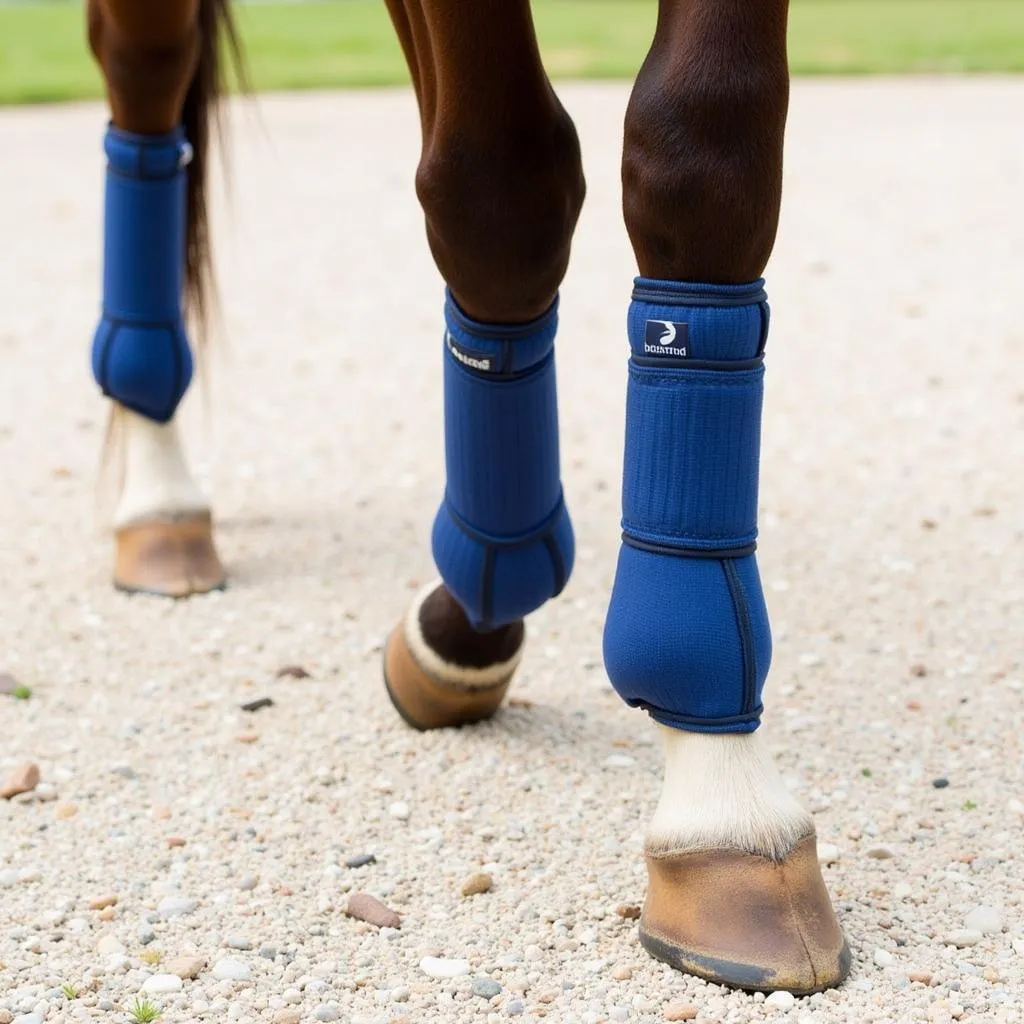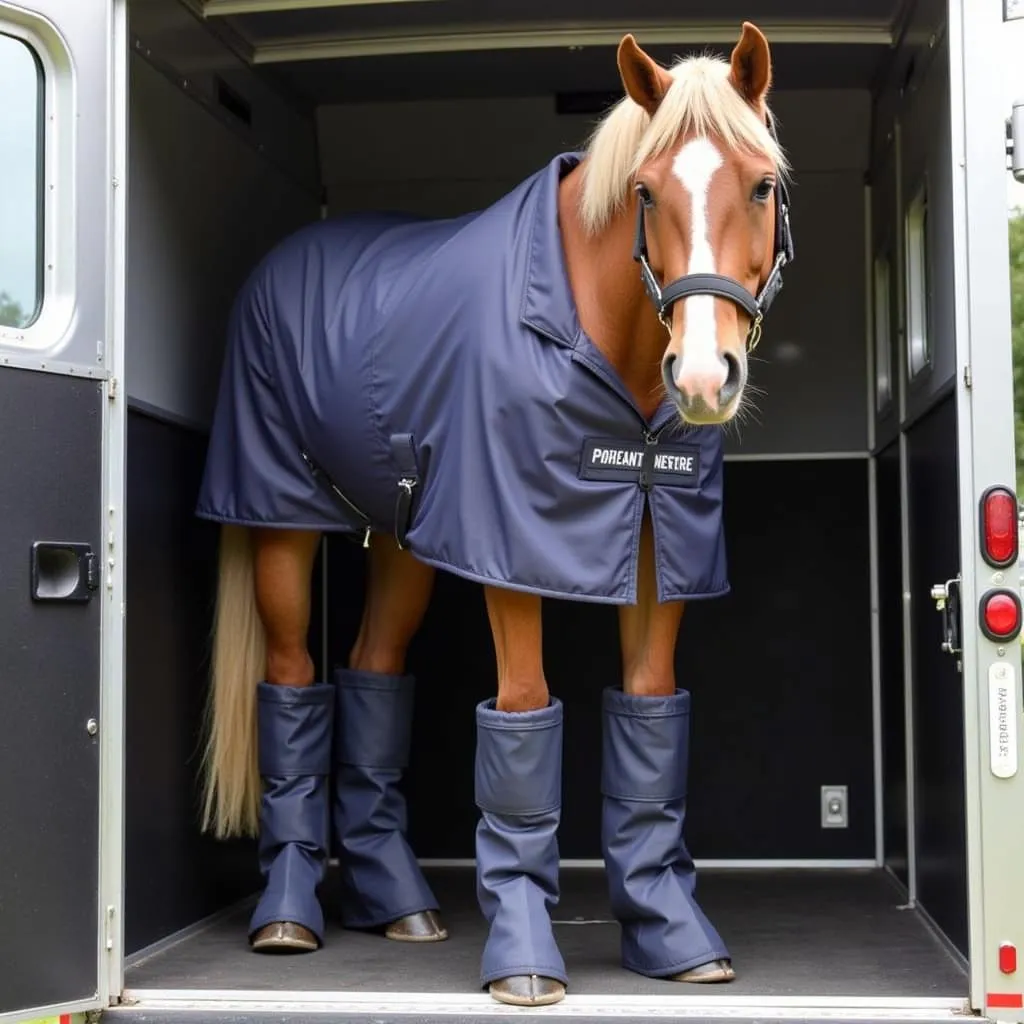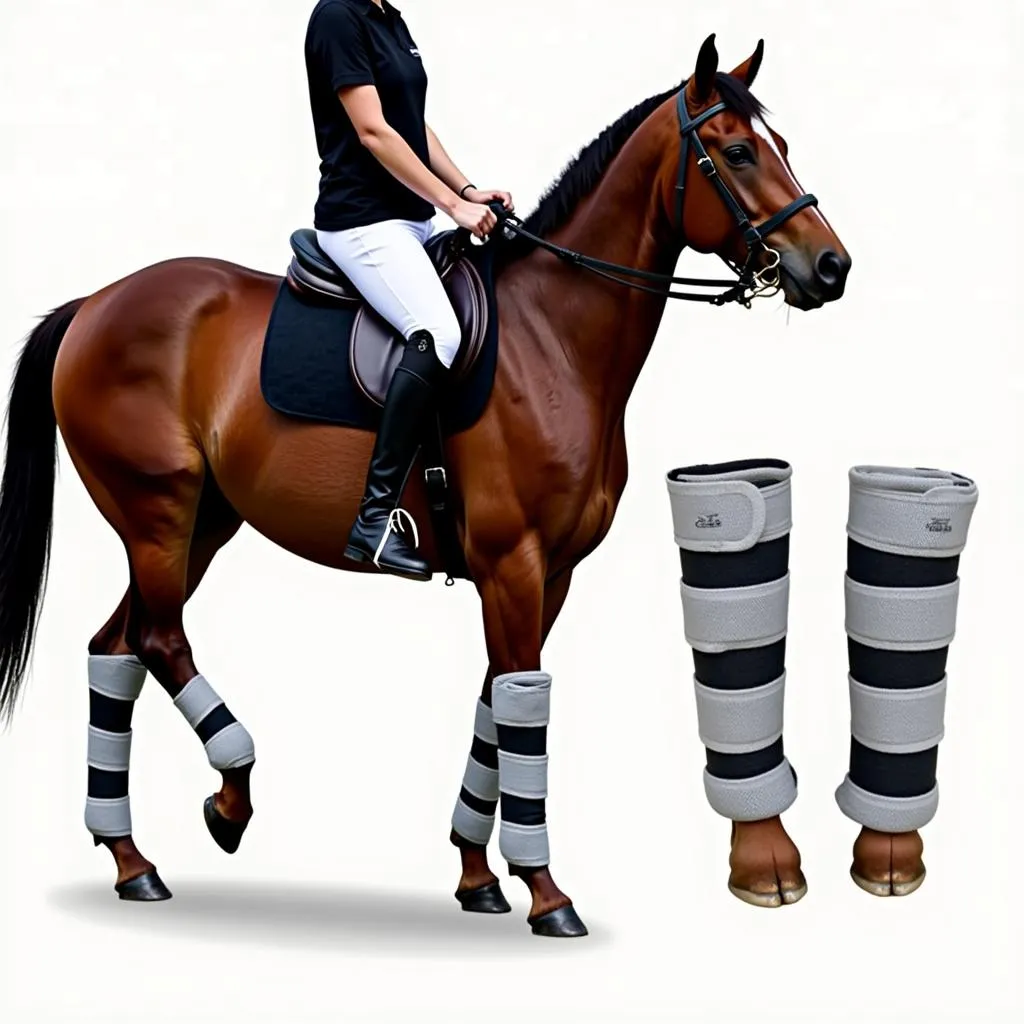Leg wraps for horses are an essential piece of equipment for any horse owner. They provide support, protection, and can even help to improve circulation. But with so many different types of leg wraps on the market, it can be tough to know which ones are right for your horse. In this comprehensive guide, we’ll cover everything you need to know about leg wraps for horses, from the different types available to when and how to use them.
Types of Horse Leg Wraps
There are a wide variety of horse leg wraps available, each designed for a specific purpose. Some of the most common types include:
Standing Wraps
 Horse standing wraps
Horse standing wraps
Standing wraps, also known as stable bandages, are used to provide support and protection for your horse’s legs while they are in their stall. They are typically made from a soft, padded material like fleece or quilted cotton, and are secured with Velcro or hook-and-loop closures. Standing wraps are an excellent choice for horses who are prone to stocking up (fluid buildup in the legs) or who have suffered a minor injury.
Shipping Boots
 Horse shipping boots
Horse shipping boots
As the name suggests, shipping boots are used to protect your horse’s legs while they are being transported. They are typically made from a tough, durable material like leather or synthetic leather, and offer full coverage from the hoof to the knee or hock. Shipping boots are essential for any horse that travels frequently, as they help to prevent injuries from kicks, scrapes, and other hazards.
Polo Wraps
 Horse polo wraps
Horse polo wraps
Polo wraps are a type of leg wrap that is commonly used during exercise. They are made from a thin, stretchy material like fleece or elastic, and are wrapped around the horse’s legs from the knee or hock down to the fetlock joint. Polo wraps provide support for the tendons and ligaments, and can help to prevent injuries.
Sport Boots
Sport boots are designed for use during specific disciplines, such as jumping, dressage, or barrel racing. These boots are made from a variety of materials, including neoprene, leather, and synthetic fabrics. They offer targeted support and protection for the areas of the leg that are most susceptible to injury during these activities.
When to Use Leg Wraps for Horses
Deciding when to use leg wraps on your horse depends on the specific type of wrap and your horse’s individual needs. Here are some general guidelines:
- Standing wraps: Use standing wraps for horses that are prone to stocking up, have recently suffered a leg injury, or are recovering from surgery. They can also be used for horses that are confined to their stalls for long periods.
- Shipping boots: Always use shipping boots when transporting your horse. This will help to prevent injuries during loading, unloading, and while the horse is in transit.
- Polo wraps: Polo wraps can be used during exercise to provide support and protection for the tendons and ligaments. However, it’s important to use them correctly and to avoid leaving them on for extended periods.
- Sport boots: Use sport boots as needed for your specific discipline. Consult with your veterinarian or equine therapist to determine which type of sport boot is right for your horse.
How to Wrap Horse Legs
 Wrapping horse legs properly
Wrapping horse legs properly
Proper application of leg wraps is crucial to avoid injury. Here’s a step-by-step guide on how to wrap your horse’s legs:
- Start with clean, dry legs.
- Use a padding layer under standing wraps or polo wraps for extra protection.
- Begin wrapping at the center of the cannon bone, wrapping from front to back and outside to inside.
- Wrap smoothly and evenly, avoiding any wrinkles or twists.
- Secure the wrap with Velcro or hook-and-loop closures, making sure it’s snug but not too tight.
- Check that the wrap is not too tight by inserting two fingers beneath the wrap.
Leg Wrap Tips and Precautions
- Introduce leg wraps gradually, allowing your horse to get accustomed to the sensation.
- Never wrap a wet or dirty leg, as this can trap dirt and bacteria, leading to infections.
- Avoid wrapping legs too tightly, as this can restrict blood flow and cause injury.
- Remove and check wraps regularly for any signs of rubbing, chafing, or discomfort.
- Consult with your veterinarian if you have any concerns about your horse’s legs or the use of leg wraps.
Conclusion
Leg wraps are a valuable tool for horse owners, providing support, protection, and aiding in injury prevention. By understanding the different types of leg wraps available, their proper use, and potential risks, you can ensure your equine partner receives the best possible care.
Remember, if you need assistance with choosing the right leg wraps or have any questions about horse care, our team at Justus Horses USA is here to help! Contact us at Phone Number: 0772127271, Email: [email protected], or visit our location: QGM2+WX2, Vị Trung, Vị Thuỷ, Hậu Giang, Việt Nam. We offer 24/7 customer support to address your needs.